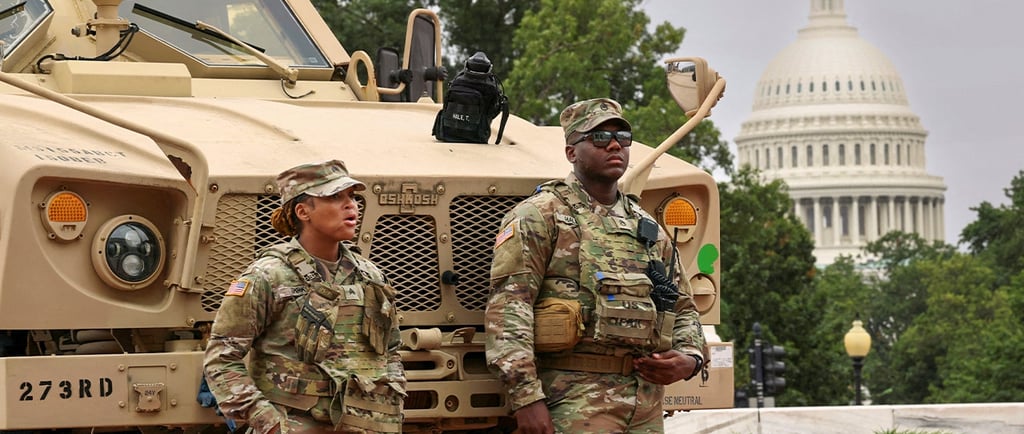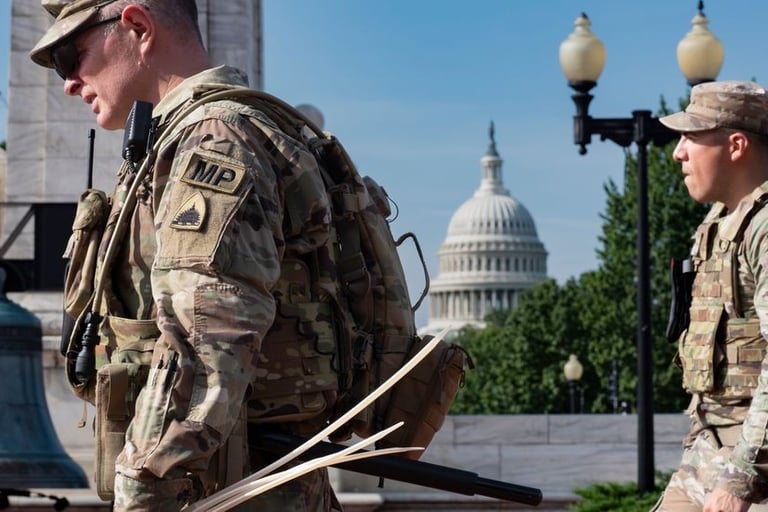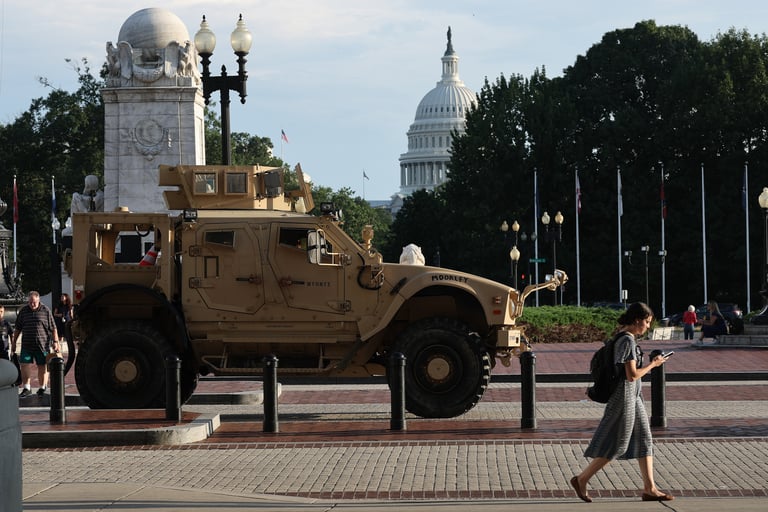National Guard in 19 States: What Happened, Why It Matters, and What Comes Next


National Guard in 19 States: What Happened, Why It Matters, and What Comes Next
What Happened
The Pentagon has green-lit a plan for up to 1,700 National Guard troops to mobilize across 19 states to help Immigration and Customs Enforcement (ICE) with the surge in detention and processing this fall. The troop support runs under Title 32 status, which keeps Guard members under their governors’ command and focuses their jobs on administrative, logistics, and processing roles—things like case management, data entry, fingerprinting, DNA swabs, and photographing detainees. The idea is to free up ICE agents for field work while the Guard handles the back-end load.
This Guard mission is separate from the National Guard presence in Washington, D.C. tied to President Trump’s “crime crackdown” in the capital. The White House said the 19-state activations were planned earlier to support ICE and are not the same operation as the D.C. deployments—though the timing has blurred the lines for the public. Fox
How big is the ICE surge? By Stars and Stripes’ tally, more than 59,000 people are in ICE detention—an all-time high—after stepped-up enforcement this year. That’s why the Department of Homeland Security asked for military support in the first place. The original concept even explored using Marines, but the Pentagon shifted to the Guard under Title 32 because that status allows closer contact for processing work while keeping the mission state-controlled.
States are beginning to publish their numbers and timelines. Florida has authorized about 200 Guard members across nine ICE facilities and already activated the first 25. Virginia expects roughly 60 soldiers and airmen to start in early September. Iowa plans 20 soldiers from Sept. 8 to Nov. 15. South Carolina will send 40 for admin duties through the fiscal year-end. Wyoming is preparing up to 15 within three weeks. Nevada approved 35 volunteers through Nov. 15, and Idaho plans 14 for clerical work in southern offices. Vermont declined to participate. The Pentagon’s July 25 statement set the overall headcount at around 1,700 after switching earlier personnel from Title 10 to Title 32.
Meanwhile in Washington, D.C., a separate operation continues: Guard units are on the streets under federal direction, and Defense Secretary Pete Hegseth has now authorized Guard troops there to carry weapons for personal protection and law-enforcement support. This is distinct from the 19-state ICE support mission, but the parallel headlines have fueled confusion.


Why It Matters
It tests the boundary between immigration enforcement and military support. The Posse Comitatus Act traditionally keeps the U.S. military out of civilian policing. Title 32 is a different lane: Guard members stay under their governors, and the federal government pays the bill. In practice, that lets the Guard help inside ICE facilities—fingerprints, biometrics, transport—while leaving arrests and field enforcement to federal agents. The legal architecture matters, because it determines who’s in charge and what troops can do. Reuters’ legal explainer lays out the map: D.C. is unique; in the states, the president’s direct power is limited unless he turns to other legal authorities that would almost certainly be challenged.
The scale tells you where immigration policy is right now. Detention is at record levels, which strains ICE facilities and personnel. When back-office tasks pile up, the bottleneck moves from the border to the booking desk. A Guard infusion shifts that bottleneck again. If it works as intended, field agents spend more time in enforcement and less time on paperwork. If it doesn’t, you’ve simply moved the line—from intake to transport, from data entry to court scheduling. Either way, it’s a signal that the system is running hot.
States are inside the decision, not just spectators. Title 32 runs through the governors. That’s why you’re seeing varied participation levels, different end dates, and specific disclaimers about duties. Florida’s nine-site plan looks nothing like Idaho’s clerical team of fourteen. Some states are still “reviewing” the request; Vermont said no. This state-by-state texture reflects both politics and logistics: who has ICE facilities, who has available Guard units, and how each governor wants to frame the mission.
Parallel deployments in D.C. raise separate constitutional questions. In the capital, the president can activate the D.C. Guard directly and invite other states’ Guards under complex legal setups. That’s why troops from GOP-led states have been arriving to bolster the D.C. mission. Critics point to crime trends and ask whether the show of force is more political than practical. Supporters say visible presence deters crime and protects federal assets. The legal tools exist—from Title 32 arrangements to, in extreme cases, the Insurrection Act—but every step beyond D.C. into other cities would invite court fights.
Messaging and perception are part of the policy. The White House is now emphasizing that the 19-state Guard mobilizations for ICE were planned before talk of exporting the D.C. crackdown to places like Chicago or New York. That distinction matters for public trust and for courts that may probe intent. It also matters for mayors and governors preparing their own responses.


What Comes Next
Watch the calendar: August → mid-November. Many state notices run through mid-November or the end of the fiscal year. That gives a three-month window to see if the Guard presence speeds intake, moves detainees faster through the system, and eases pressure on ICE facilities. If the backlog shrinks, DHS will argue the model worked. If it doesn’t, expect fresh asks—either for more Guard, more contractors, or additional detention capacity.
Expect legal and political tests. Any move to push the D.C. model into other cities will trigger lawsuits and state pushback. Reuters’ rundown makes the boundaries clear: D.C. is a special case; entering a state over a governor’s objections is a different legal mountain. If the administration tries it using Section 12406 of Title 10 or flirts with the Insurrection Act, the courts will get involved fast.
States will keep customizing their roles. Watch for more specifics like Florida’s nine-facility plan or Iowa’s narrow September-to-November window. Small deployments—dozens, not hundreds—are the norm so far. As numbers firm up, expect local press releases that spell out “no arrests, admin only,” which helps the Guard manage public expectations and safety concerns.
The D.C. mission evolves in parallel. With Hegseth authorizing Guard troops in Washington to carry weapons, the capital’s operation has entered a new phase. If the administration claims big drops in crime or major arrest numbers, it will build a case for taking a similar approach elsewhere. If incidents or legal rulings go sideways, the momentum will shift the other way.
Bottom line: the 19-state Guard mobilization is a processing surge, not a nationwide military policing plan. It leans on Title 32 to keep the Guard under the governors while boosting ICE’s capacity. The separate D.C. deployment is a public-order show of force with its own legal footing. They’re running at the same time, which is why they’re being conflated. Over the next few weeks, watch three indicators: detention numbers, state-by-state orders, and any sign the D.C. model jumps to other cities. Those signals will tell you whether this is a temporary pressure valve—or the start of a broader, more contested strategy.
Insights
Simplifying global events for better understanding.
Updates
News
info@worldeventsexplained.com
© 2025. All rights reserved.
